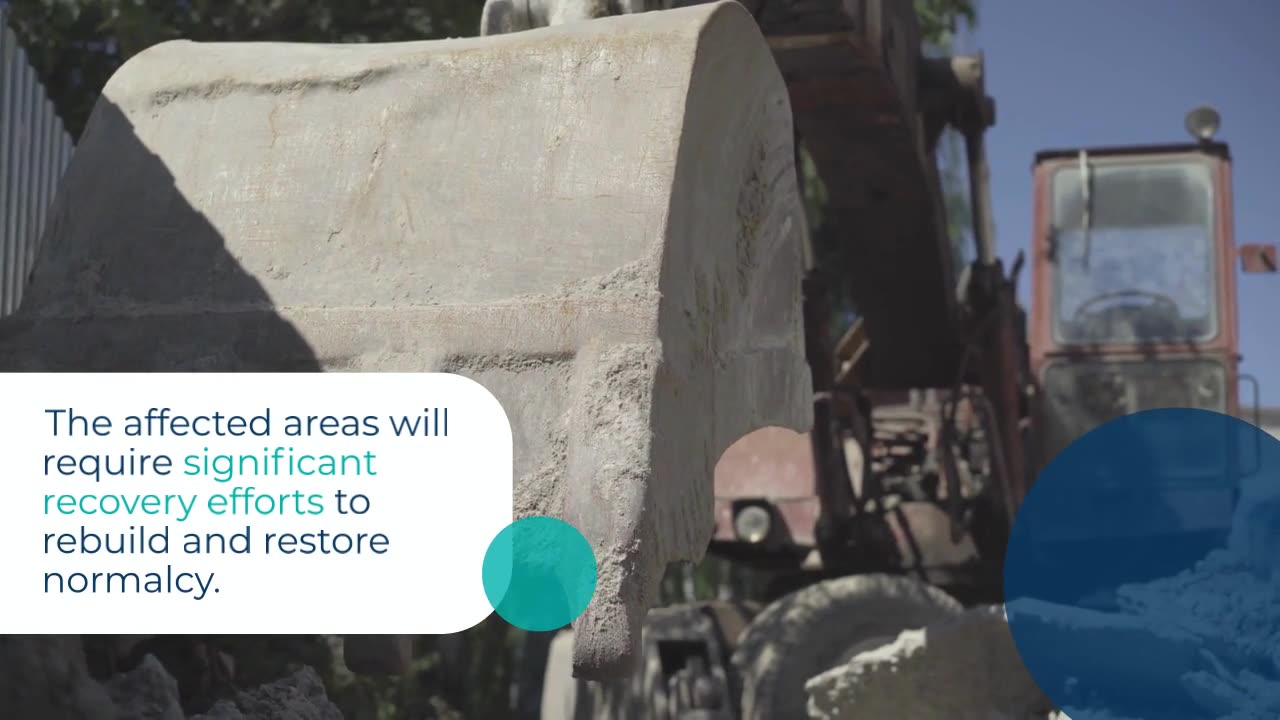Premium Only Content

Hurricane Idalia Leaves Up To $20 Billion In Damage, Estimate Says–Well Below Ian
Hurricane Idalia Leaves Up to $20 Billion in Damage, Estimate Says – Well Below Ian
In the wake of Hurricane Idalia's destructive path, preliminary estimates suggest that the storm has caused damages amounting to up to $20 billion, a figure significantly lower than the devastation wrought by its predecessor, Hurricane Ian. The aftermath of Hurricane Idalia, while still a significant blow to affected regions, has led experts and residents to breathe a sigh of relief when compared to the catastrophic consequences of its predecessor.
Hurricane Idalia, a formidable and powerful storm, made its presence known as it moved through coastal areas and inland regions, leaving a trail of destruction in its wake. Reports of widespread flooding, structural damage, power outages, and disrupted transportation networks have emerged from the affected areas, which include coastal communities and cities along its path.
However, the estimated damage caused by Hurricane Idalia is notably lower than the staggering losses incurred during the earlier Hurricane Ian, which struck with devastating force and left a trail of destruction and loss of life in its wake. The stark contrast in the financial toll reflects the complex nature of hurricane forecasting, response preparedness, and mitigation efforts.
The discrepancy in damage estimates can be attributed to several factors, including differences in storm intensity, the path taken by the hurricane, and the effectiveness of disaster response and recovery measures put in place by local and federal authorities. These factors highlight the critical role that early warning systems, evacuation plans, and resilient infrastructure play in minimizing the impact of natural disasters.
While the estimated $20 billion in damage caused by Hurricane Idealist is still a significant economic setback for the affected regions, it underscores the importance of continuous efforts to improve hurricane forecasting, disaster preparedness, and response strategies. In the face of increasingly frequent and severe weather events, communities must continue to prioritize resilience and adaptation to reduce the human and economic toll of future disasters.
In the aftermath of Hurricane Idealistic, efforts to assess the full extent of the damage, support affected communities, and initiate recovery and reconstruction projects are already underway. The road to recovery will be challenging, but it serves as a stark reminder of the need for ongoing vigilance and investment in disaster risk reduction to protect lives and livelihoods in an era of climate uncertainty.
-
 4:27:46
4:27:46
Nerdrotic
10 hours ago $48.92 earnedDaredevil Born Again REVIEW, Harry Potter Show DOA, DC HACKED! | Friday Night Tights 344 Paul Chato
136K39 -
 1:15:15
1:15:15
Glenn Greenwald
7 hours agoWeek in Review: Lee Fang and Leighton Woodhouse on Ukraine War and NYT Piece Revealing Tensions within Trump Admin; PLUS: Lee Fang Takes Audience Questions on DOGE and Big Tech | SYSTEM UPDATE #420
78.2K44 -
 1:03:30
1:03:30
Sarah Westall
9 hours agoMassive Government Overhaul: FBI, CIA, IRS and more to be Gutted w/ Sam Anthony
89.5K27 -
 1:07:40
1:07:40
IsaacButterfield
10 hours ago $4.26 earnedAustralia Under Attack | Trump's State of the Union | All LGBTQ Cast (W Guest Frenchy)
45.3K9 -
 1:23:37
1:23:37
Edge of Wonder
9 hours agoIs Your Car Collecting Your Biodata? Whistleblower Exposes Dark Agenda
42.5K9 -
 2:08:50
2:08:50
Quite Frankly
12 hours ago"A Rat at HHS, Gene Hackman, Musical Extras" ft. J Gulinello 3/7/25
45.1K13 -
 55:49
55:49
LFA TV
1 day agoGermany Started Two World Wars and Now Wants Nuclear Weapons | TRUMPET DAILY 3.7.25 7PM
39.1K27 -
 1:34:38
1:34:38
2 MIKES LIVE
8 hours ago2 MIKES LIVE #189 Open Mike Friday (Sort Of)
29K -
 1:48:14
1:48:14
Right Side Broadcasting Network
16 hours agoLIVE REPLAY: President Trump Delivers Remarks at The White House Digital Assets Summit - 3/7/25
151K42 -
 2:07:17
2:07:17
The Quartering
14 hours agoTrump Goes Ballistic On Russia & Ukraine Gets Results, Democrat Cringe, FBI Arrests Military Men
147K82